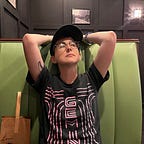Hunger
Female directors and the rise of girl-cannibal horror
We live in the midst of a renaissance of female-driven horror.
Of course, to get a renaissance, you need a dark age first. Over the second half of the 20th century, horror’s epicenter shifted to movies, where Hollywood’s bias toward white male directors threatened to quash female voices entirely. Though great horror movies have been made in every era, by the 1980s, the mainstream was clogged with what Roger Ebert called “dead teenager movies.” Women’s involvement therein was confined to fucking, screaming, or dying.
Literature was also encrusted with dudeliness. In 2012, the website Horror Novel Reviews listed the 10 greatest living horror writers; all 10 were white men. Granted, that site is hardly the Paris Review, but if you think of “horror novels,” your immediate associations — the Kings and Koontzes and Barkers of the world — will likely be guys. You might add Anne Rice. You might even add all the romance novels with vampires in them — your True Bloods and Twilights and Anita Blake: Vampire Hunters, and so on. But finding non-vampire-based examples would take time.
Yet in 2017, even when the numbers for female directors are dismal everywhere else, the “rise of the female horror director” keeps on generating trend pieces. Julia Ducournau, Ana Lily Amirpour, Jennifer Kent—if you’ve heard about a buzzy new horror project lately, odds are that a woman made it. (Or, to be fair, it might be Get Out.) Even male-directed projects like…
